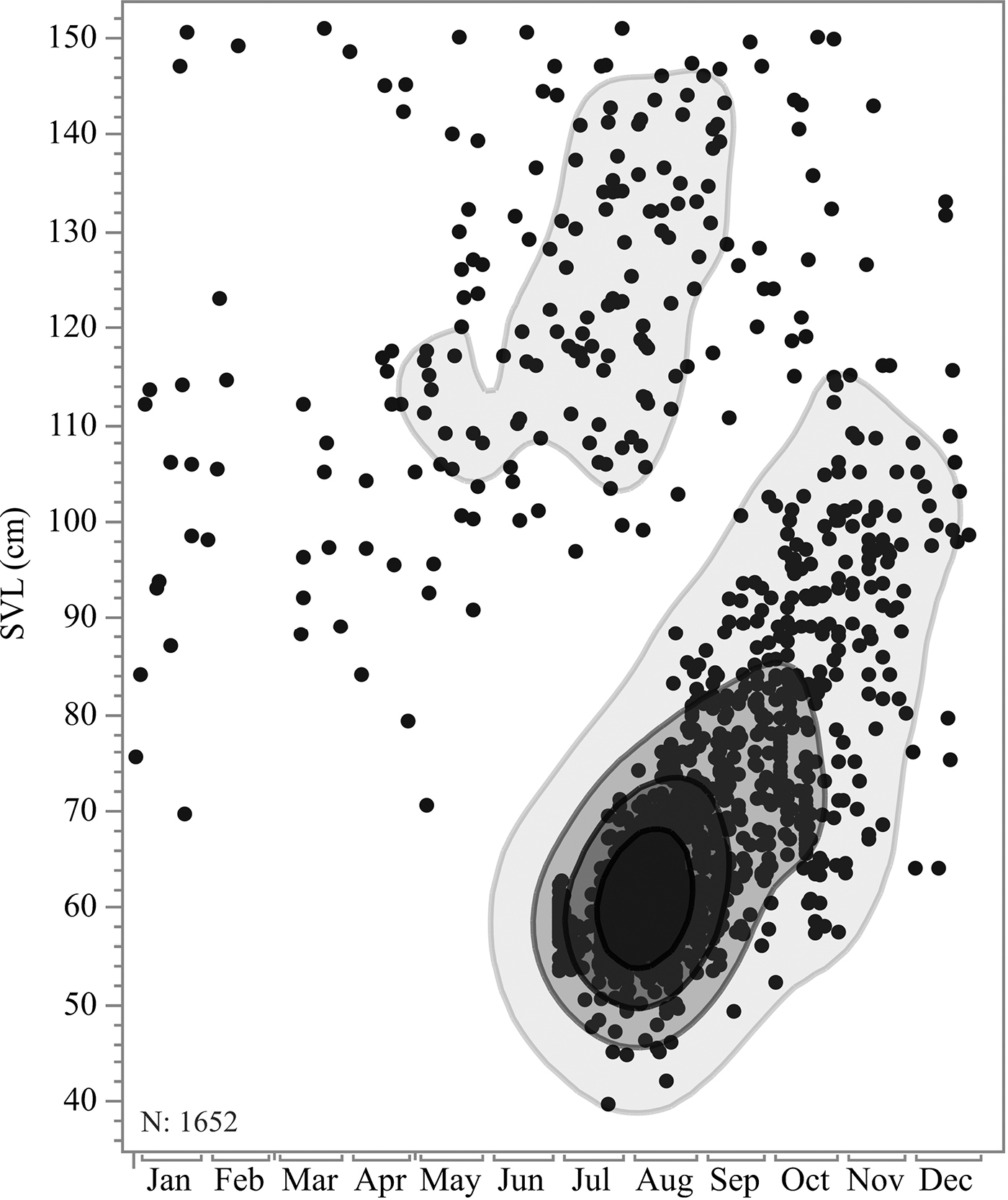
|
||
|
Juvenile Burmese python (Python molurus bivittatus) captures (dark dots) across months of the year (scale in Julian days) by snout-vent length (SVL; cm) in southern Florida, USA (1995–2021). Shaded probability polygons represent 25%, 50% ,75%, and 99% data density contours. The separation of the dark lower right set of overlapping polygons from the rest of the points earlier in the year highlights the months of highest juvenile encounters (July through October) and their correlated spread of sizes over those months, helping to distinguish the smaller young-of-year (YoY) hatchlings from other juveniles. Outside the July into October timeframe, YoY and juveniles from the prior year cannot be confidently distinguished. |